Move over chickpea hummus. There's a new hummus in town, and it's packing some serious flavor. This lemon beet hummus recipe is pretty, full of color, flavor-packed, and perfect for boosting your metabolism and providing essential vitamins and minerals. Plus, it's super easy to make! So ditch the store-bought stuff and give this lemon beet hummus recipe a try today. You won't regret it!
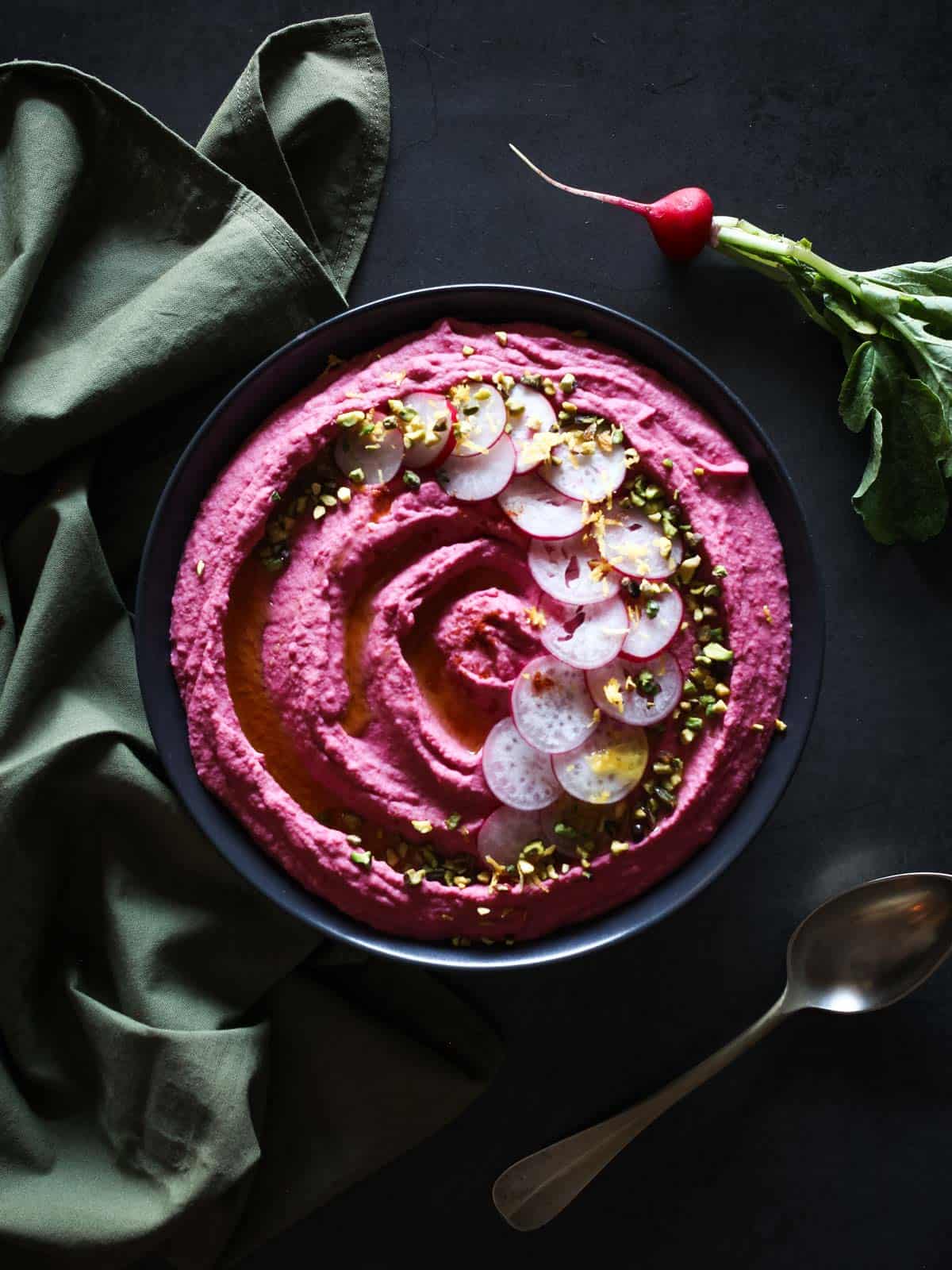
If you have been with us for a while, you know that we are avid hummus lovers.
White bean hummus makes perfect healthy appetizers or mid-morning protein-packed snacks.
This lemon beet hummus recipe has something very different apart from the lovely color... it doesn't use chickpeas, just like our green edamame hummus and black-eyed peas hummus.
We have found that white beans are an excellent substitution for people that don't digest chickpeas hummus very well or want to try something new.
This colorful hummus makes a perfect special occasion starter. Why not try it out for Valentine's dinner!
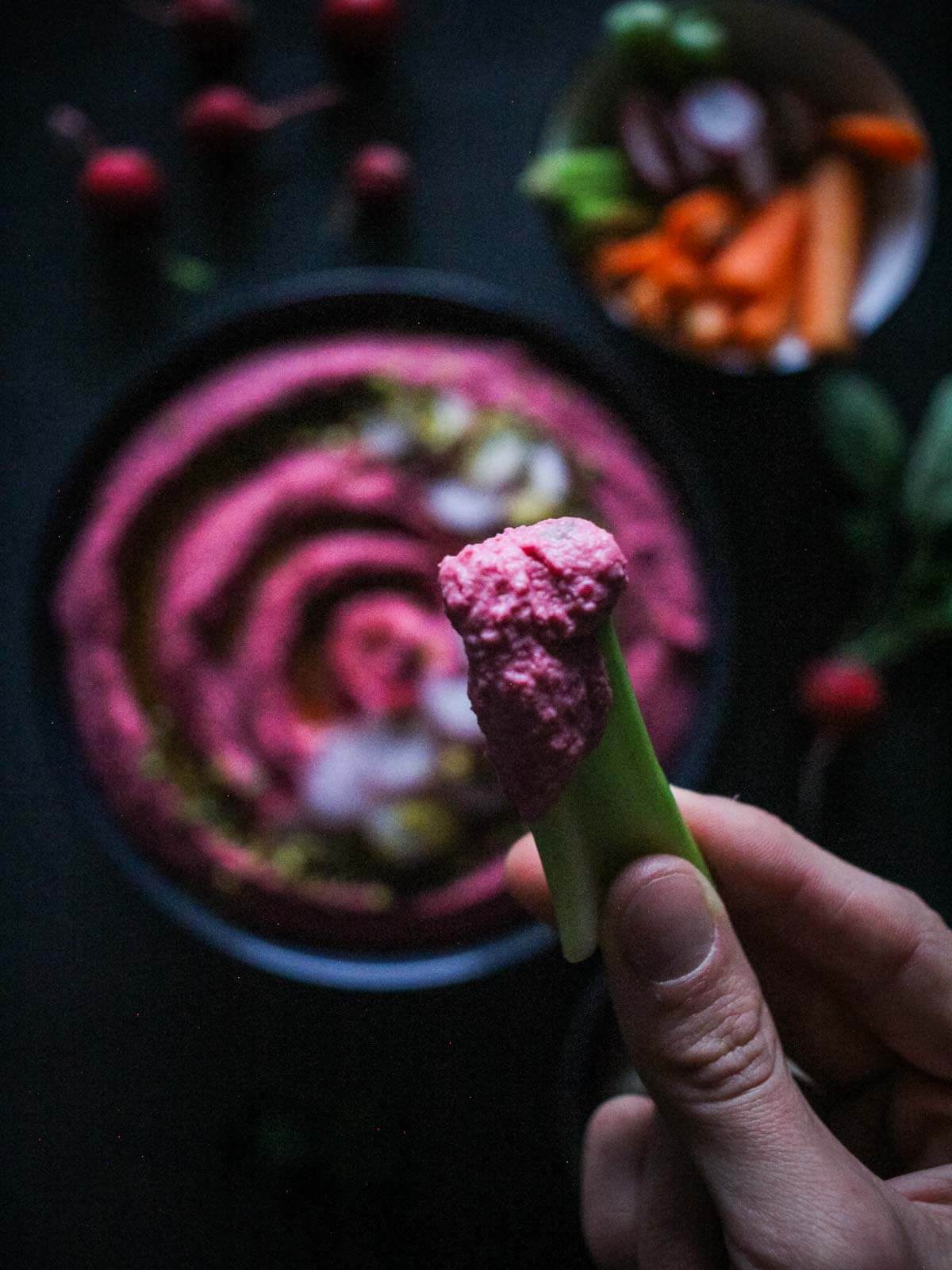
Also, beets have many health benefits, and adding them to our juices or savory foods is a great way to make the best out of them.
Jump to:
💜 Why you will love it
- It is naturally vegan
- Gluten-free
- Dairy-free
- Colorful
- Easy to make
- Made in minutes
- Crowd pleaser
🧾 Ingredients
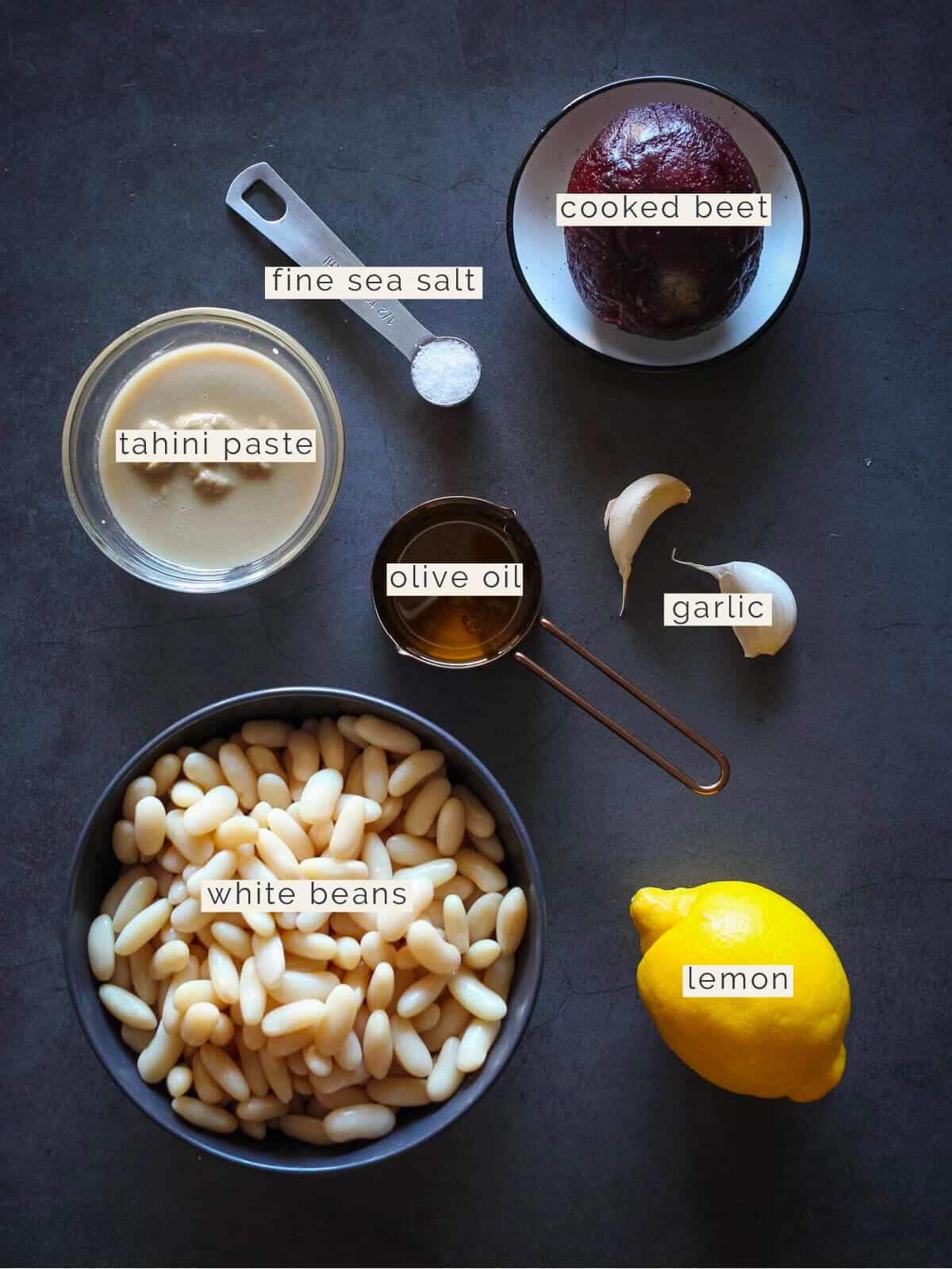
Of course! Here's the revised list with each ingredient and its explanation on the same line:
- Cooked beets (canned beets or roasted beets work well): These add a vibrant color and earthy flavor to the hummus, and their natural sweetness balances the tanginess of the lemon and the sharpness of the garlic.
- Lemon juice: It provides a refreshing tanginess and brightness to the hummus, and the acidity also helps preserve the freshness of the dip.
- White beans (cannellini beans or cooked chickpeas): They serve as the creamy base for the hummus, giving it a smooth texture, and are a great source of protein and fiber, making the hummus more nutritious.
- Fresh garlic (or roasted garlic): Garlic adds a depth of flavor and a touch of sharpness to the hummus, and when roasted, it imparts a mellow and slightly sweet flavor.
- Tahini: This sesame seed paste gives the hummus its traditional Middle Eastern flavor and contributes to the dip's creamy texture.
- Extra virgin olive oil: It enhances the richness and mouthfeel of the hummus, and the oil also acts as a preservative, keeping the hummus fresh for longer.
Fresh chopped parsley and lemon zest to garnish.
Substitutions
- Tahini: Sesame paste is made with ground sesame seeds, so if you have sesame allergies, you can change the tahini for cashew butter, almond butter, or peanut butter.
- Chickpeas: You can use chickpeas instead of white beans. Replace for the exact quantities. If you will boil raw chickpeas, make sure to boil them for about thirty minutes with a teaspoon of baking soda, then let the chickpeas cool down and optionally remove the chickpea skins. This will help you achieve a creamier hummus. Save some of the chickpea liquid to adjust the hummus' texture.
- Beets: If you love beets and are one of those lucky ones who have their own beets in the garden, you can perfectly make your beet hummus using them instead of canned beets.
Instead of using canned beets, you can use raw beets and then roast beets wrapped in aluminum foil if you have some extra time.
To make a whole roasted beet, wrap beets with the garlic clove and a drizzle of olive oil or avocado oil, close the aluminum foil, and roast in the oven at 350 ºF (180 ºC) until they are fork-tender to add some lovely caramelized and smoky flavor.
Use more red beets if you want to add a slightly sweet-caramelized flavor.
🍽 Equipment
Food processor - use a large food processor (affiliate link) if more than one suggested serving.
🔪 Instructions
Making this white bean hummus recipe cannot be easier. You simply have to blend everything in a food processor.
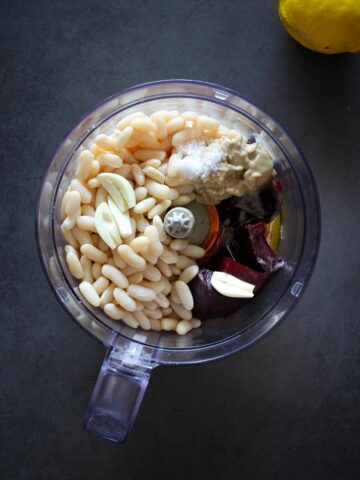
Step 1: Juice your lemon, measure your liquids, and drain your grains (keep the water), and put everything into a food processor.
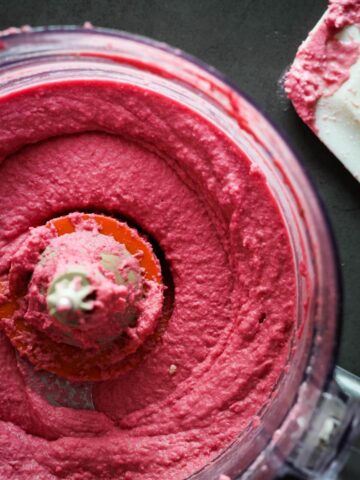
Step 2: Blend until you achieve a smooth and creamy hummus. You may have to scrape the inner borders of the food processor with a spatula once or twice to ensure the beet hummus is blended well and doesn't have any hard chunks.
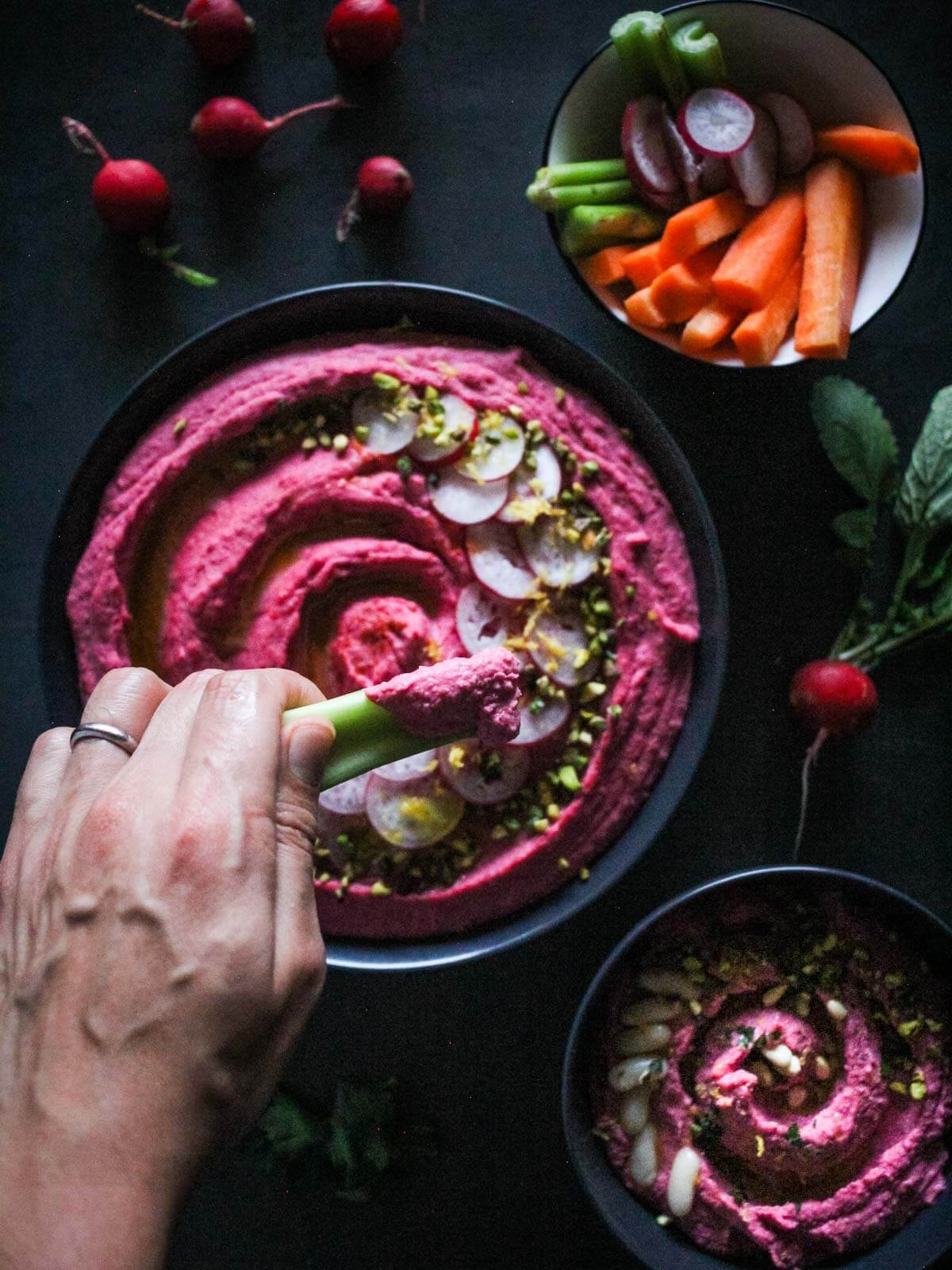
Step 3: To adjust the seasoning of your beet hummus recipe, add more lemon juice for acidity, tahini for a nutty flavor, white beans or chickpeas starchy water for texture, garlic (very little) for intensity, and extra virgin olive oil for extra creaminess.
👨🏻🍳 Garnishing options
Start making using the back of a spoon and make pockets in the hummus with a circular motion from the outside to the inside.
Then, add olive oil to fill some of the beet hummus pockets.
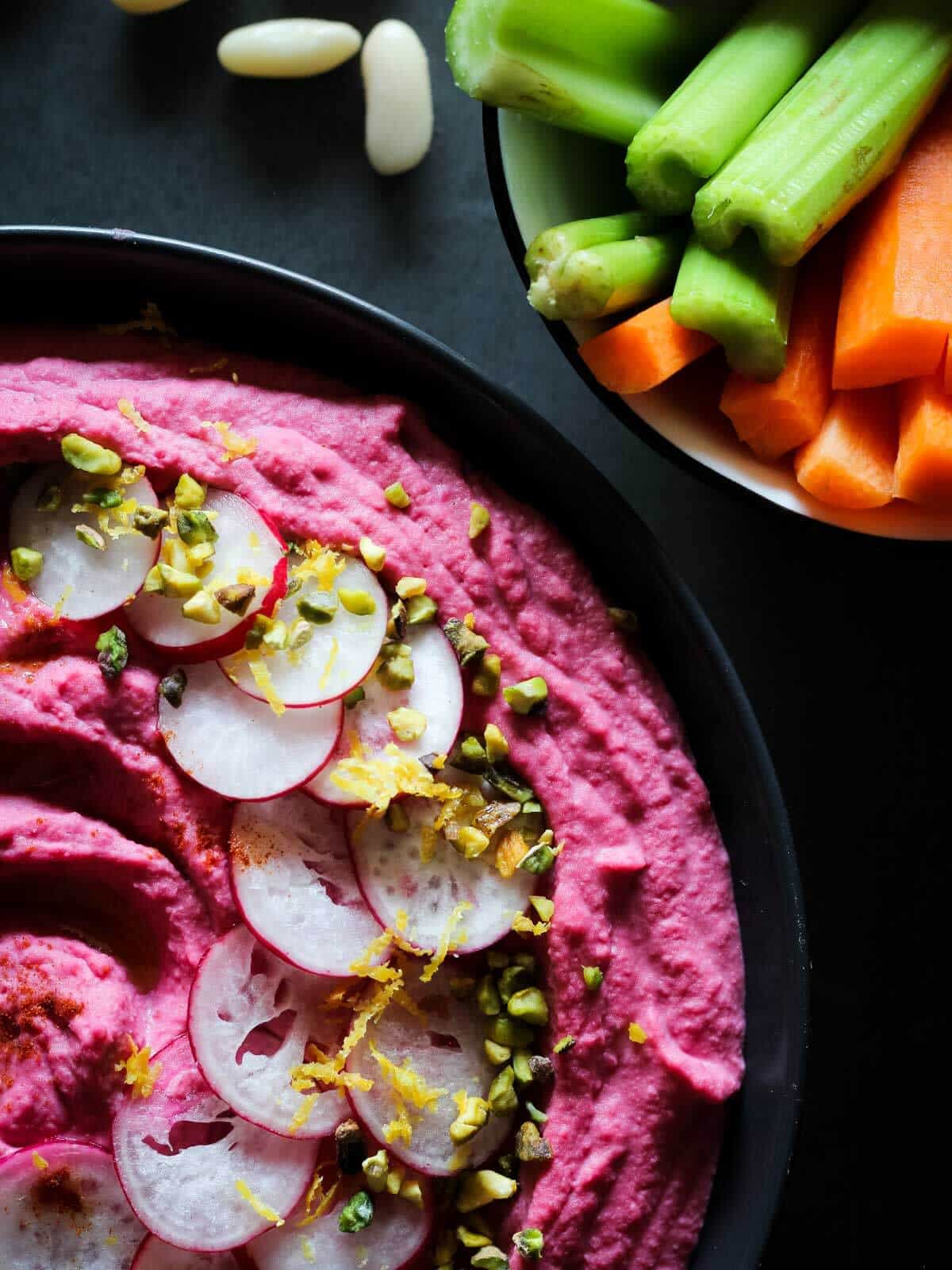
Then, use products that create contrast but don't change the flavor, such as pumpkin seeds, sesame seeds, and fresh chopped parsley.
- Sesame seeds: We like using a mix of lightly toasted white and black sesame seeds. Just use one teaspoon of each and toast them at low heat in a small flat pan for 2-3 minutes.
- Pine nuts: The same method as above, but you can also use them raw, out of the package. If you decide to toast the pine nuts, stay close to the pan, and pine nuts roast quickly as they have a lot of fat content.
- Cooked chickpeas or white beans: Save some extra cooked beans to place on top of the beet hummus. The idea is to create some contrast that adds depth and additional interest.
- Cooked beets: Slice some cooked beets and place them on top of the hummus.
- Roasted garlic: If you go for roasted beets and roast some garlic with it or roast some garlic in a flat pan for 2-3 minutes, you can add some charred garlic cloves on top of the beet hummus.
- Herbs: Use finely sliced chopped basil or fresh parsley to add some color to this delicious recipe.
💡 Expert tips
- Blender power: If you are unsure about how powerful your blender is, mince the garlic before blending it. Nobody wants to find a chunk of garlic in a bite. You may need one to three minutes to make beet hummus smooth and creamy.
- How many beets: Use more cooked beets to add flavor or sweetness. I like adjusting this white bean hummus, one tablespoon of each ingredient at a time. I tried different amounts of beets to ensure the best flavor doesn't overpower the hummus. My findings show that 6 ounces are good, and 7 ounces is my perfect sweet spot. I suggest adding 6 ounces, and if you want some more, add more beets, that extra ounce.
- Acidity: I think it is very personal. If you feel you added too many beets, try to balance it with a bit of lemon juice.
- Creaminess: Save some of its starchy water from adjusting the texture regardless of using cooked white beans or chickpeas. Using this water helps me make creamy beet hummus without adding excessive oil, especially if it is cold. Add one tablespoon at a time to ensure you make a creamier hummus.
- Garlic: I always use a minimum amount of garlic in my hummus recipes because garlic (especially when using raw garlic cloves) tends to overpower the final result. If you want to add some extra depth to your beet hummus and have some extra minutes, either.
- Oven roast garlic, add garlic cloves to the aluminum foil and raw beets and blend them in the food processor.
- Flat pan garlic roast - Place 2-3 garlic cloves and a few drops of olive oil in a flat pan with a lid for 3 minutes, and use them in place of the raw garlic before blending the ingredients in the food processor.
🥢 How to serve
Make this recipe a snack or appetizer that you can include at any informal or formal table. You can also add it to a salad or a sandwich. Here are our preferred options.
Beet hummus sandwiches - use this beet hummus recipe as a sandwich spread, along with some roasted veggies, to make the perfect sandwich for an easy dinner or meal prep option.
As an appetizer, serve with:
- Pita bread - I like my pita bread cut in triangles and slightly toasted with a drizzle of olive oil. Use thin pita bread with a drizzle of olive oil and briefly toast before serving.
- Seed crackers - any cracker will work; we love making crackers with leftover juice pulp, after juicing.
- Pita chips - are a classic and don't need any preparation. This is a great option when taking this beet hummus recipe to a friend's house and wanting to dig in without any hassle.
- Veggie wraps - I love using this lovely hummus to make collard greens wraps. Simply fill a blanched collard green leaf with your favorite veggies like carrot sticks, cucumbers, coleslaw mix, and sprouts with a hummus spread. Remember to thin the thick stem on the back, making rolling the wraps easier.
- Celery sticks - wash and cut your celery or buy ready-to-serve celery sticks for maximum convenience.
- Carrots sticks - or you can use store-bought baby carrots for hassle-free party hosting.
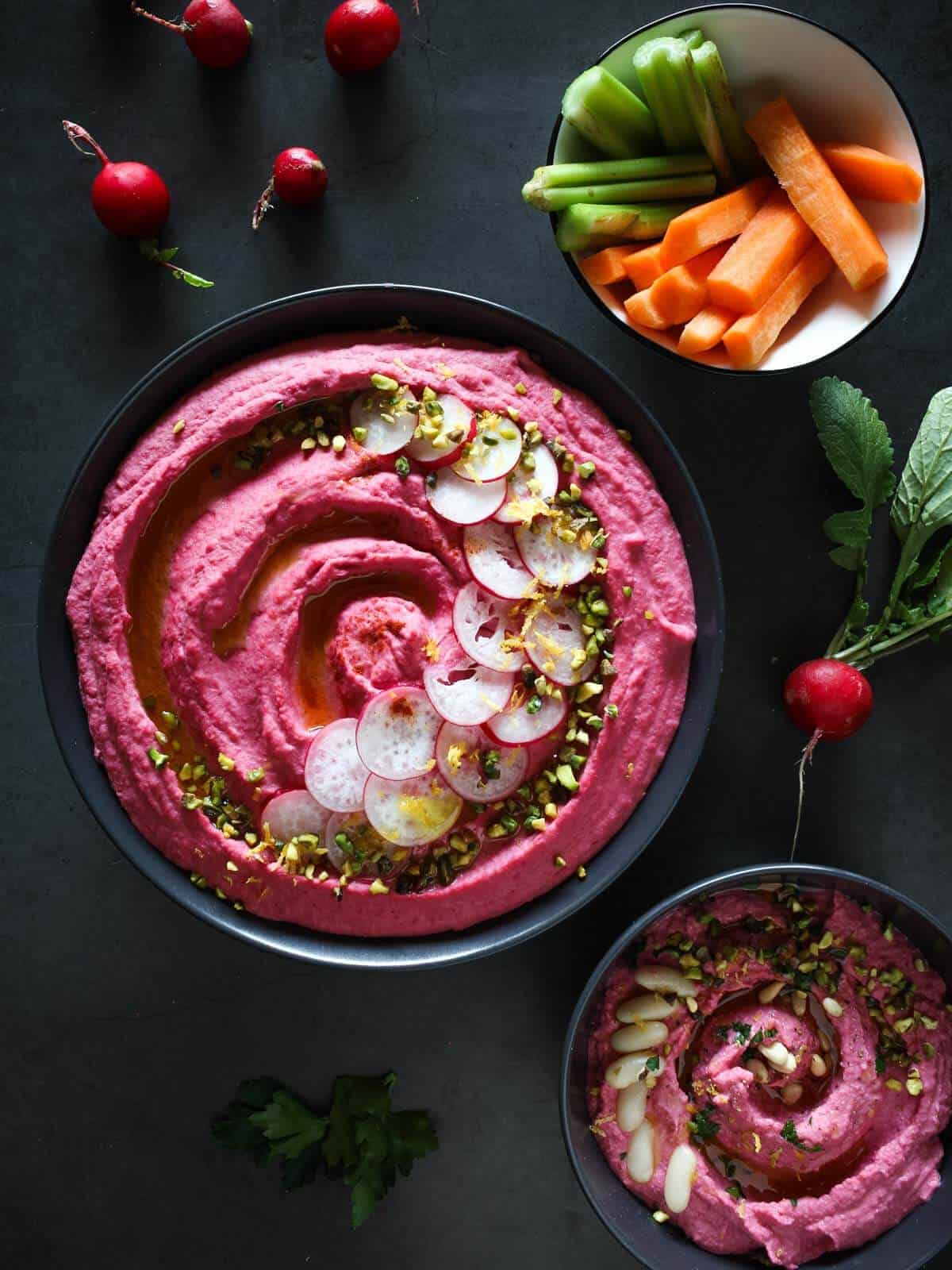
If you have two hours and want to impress your guests, you can make either a classic Italian artisan bread or our Rosemary focaccia, which is to die for.
Serving tip: use a small serving bowl if making one serving, or switch to a medium if doubling the recipe. A hummus serving needs to look full and delicious, not empty.
Check our comprehensive guide on What to eat with hummus!
🥡 Storing
Can I freeze my beet hummus?
Yes, you can. However, in the fridge, hummus is best made fresh for 1-2 days. This hummus thaws well, especially if you use it as a spread for sandwiches.
Use leftover beet hummus in your sandwiches, or add a healthy dollop on a salad for an extra protein portion and added flavor.
You might have to use a drizzle of olive oil to bring it back to life in the fridge or freezer after some days.
📖 More hummus recipes
You might have seen some of our hummus recipes, such as our traditional hummus (Lebanese hummus recipe) and flavored hummus recipes like pumpkin hummus, avocado hummus, or even roasted bell peppers hummus; they are all delicious.
If you fancy the subtle sweetness of carrots, try our carrot hummus made without tahini.
Feeling adventurous? Here's a mindblowing idea: try our green lentil hummus and the dessert hummus, made with dark chocolate and enjoyed with fresh fruit. Curious?
🎥 Video
⭐ If you try this beet hummus recipe, let us know! 💬 Leave a comment, rate it, and don't forget to tag us @ourplantbasedworld on Instagram. Cheers!
📋 Recipe

Lemon Beet Hummus Recipe
Equipment
Ingredients
- 1 beetroot medium, about 7 oz boiled and peeled
- 15 oz white beans cooked (or 1 can) + 8 tablespoons of its starchy COLD water (you can add sume ice cubes to it)
- 1 clove garlic medium, without the germ
- 1 lemon large, juiced
- ¼ cup tahini
- ¼ cup olive oil extra virgin, plus extra for drizzling
- 1 teaspoon sea salt fine
Optional for garnishing:
- red radish
- olive oil
- fresh parsley thinly chopped
Directions
- Blend. To a food processor, add peeled beets, extra virgin olive oil, cooked or canned white beans, garlic, tahini, lemon juice, and salt. You might have to scrape down the sides of the food processor.
- Adjust seasoning. You can add some of the white beans liquid - in small amounts until you reach the desired consistency. I use about 8 tablespoons.
- Serve in a small bowl and garnish with more extra virgin olive oil. Check the post suggestions for serving and garnishing.
Video
Notes
Nutrition Facts
Nutritional Disclaimer
The information shown is an estimate provided by an online nutrition calculator. It should not be considered a substitute for a professional nutritionist's advice. See our full Nutritional Disclosure here.
Affiliate Disclaimer
Please note that some of the links here are affiliate links, and I will earn a commission if you purchase through those links. I recommend all of the products listed because they are companies I have found helpful and trustworthy.
As the lead content writer and recipe developer at Our Plant-Based World, he combines his passion for health and sustainability with a Plant-Based Nutrition Certification to create accessible, delicious vegan recipes. His expertise in plant-based cooking supports the blog's mission of fostering a healthier, environmentally conscious lifestyle through simple and seasonal dishes. His commitment to making vegan cooking enjoyable and inclusive for everyone shines in each recipe and article.

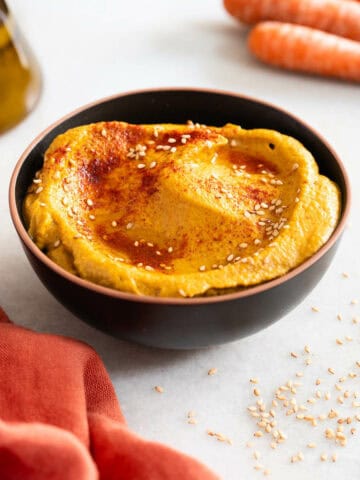
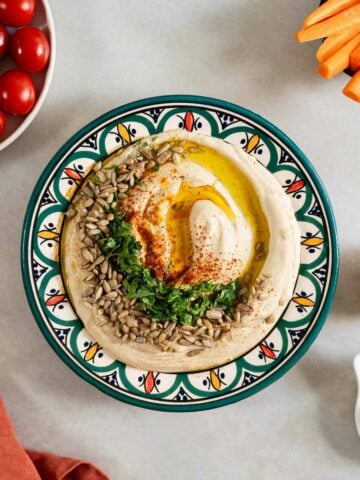
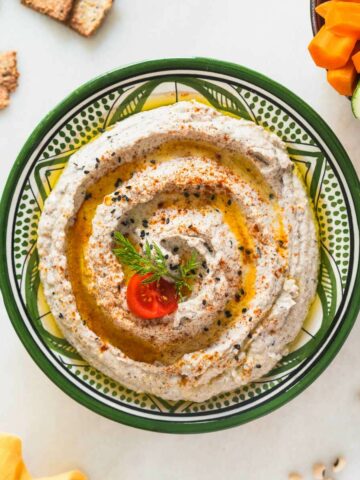
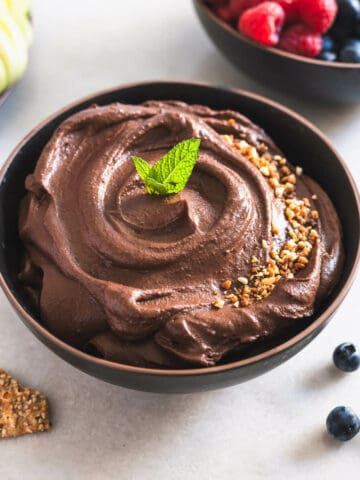
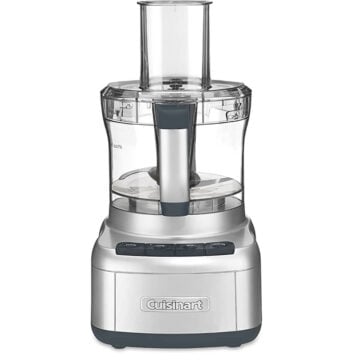
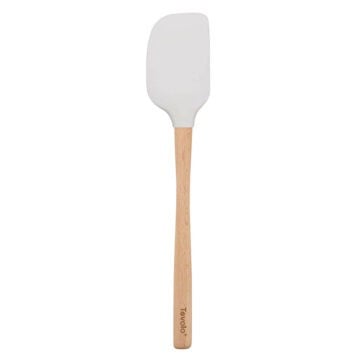

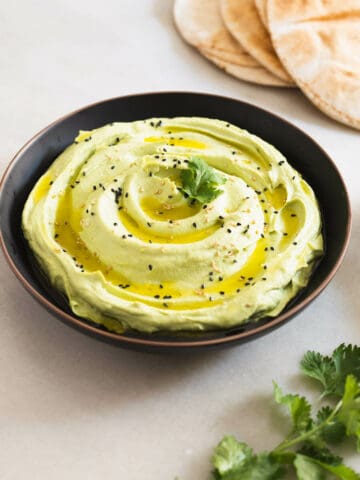
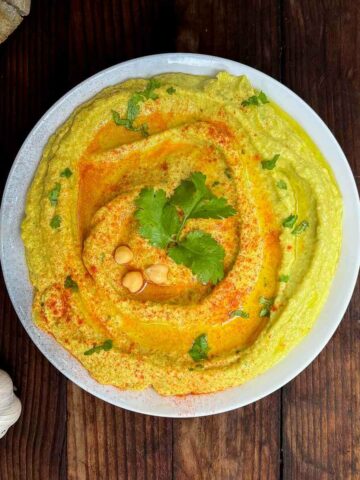
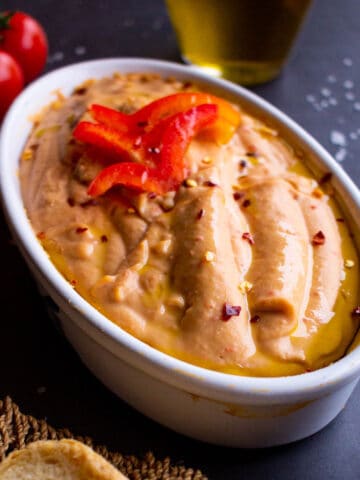
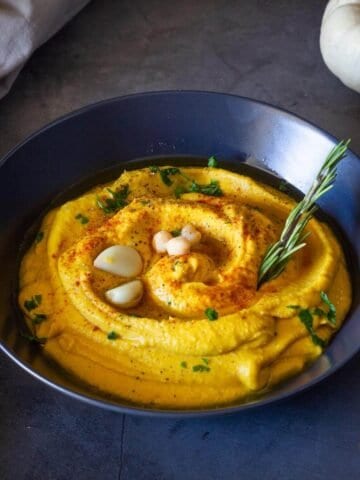
Amanda
This hummus is truly fabulous -- I can't get enough! It's wonderfully creamy, and the lemon adds the perfect brightness. Super simple to prepare too!
Gus
Thanks for your review Amanda, I am glad you liked it!
Rachel
Not only is the hummus absolutely beautiful, but it's delicious too! Definitely a new favorite recipe!
Kris
The flavors here are extraordinary! Will definitely make again. Thank you for another winner! 🙂
Carrie Robinson
I just love homemade hummus! 🙂 This flavor combo sounds amazing.
Irena
Gorgeous recipe, love the beans instead of chickpeas as it makes it so so smooth.